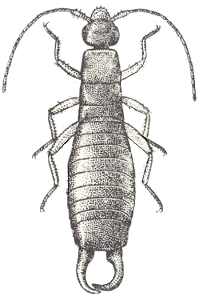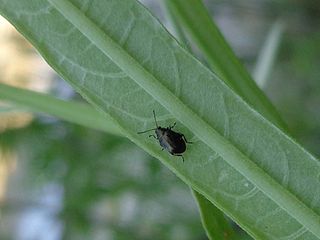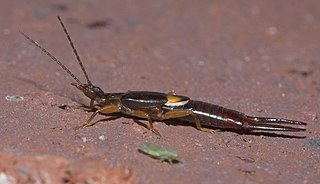
Yersinia pestis is a gram-negative, nonmotile, rod-shaped coccobacillus bacteria, with no spores. It is a facultative anaerobic organism that can infect humans via the Oriental rat flea. It causes the disease plague, which takes three main forms: pneumonic, septicemic and bubonic plagues. All three forms were responsible for a number of high-mortality epidemics throughout human history, including: the sixth century's Plague of Justinian; the Black Death, which accounted for the death of at least one-third of the European population between 1347 and 1353; and the Third Pandemic, sometimes referred to as the Modern Plague, which began in the late nineteenth century in China and spread by rats on steamboats claiming close to 10,000,000 lives. These plagues likely originated in China and were transmitted west via trade routes. Recent research indicates that the pathogen may have been the cause of what is described as the Neolithic Decline, when European populations declined significantly. This would push the date to much earlier and might be indicative of an origin in Europe rather than Eurasia.

Flea, the common name for the order Siphonaptera, includes 2,500 species of small flightless insects that survive as external parasites of mammals and birds. Fleas live by consuming blood or hematophagy, from their hosts. Adult fleas grow to about 3 mm or .12 in long, are usually brown, and have bodies that are "flattened" sideways, or narrow, enabling them to move through their host's fur or feathers. They lack wings, but have strong claws preventing them from being dislodged; mouthparts adapted for piercing skin and sucking blood, and hind legs extremely well adapted for jumping. They are able to leap a distance of some 50 times their body length, a feat second only to jumps made by another group of insects, the superfamily of froghoppers. Fleas' larvae are worm-like with no limbs; they have chewing mouthparts and feed on organic debris left on their host's skin.

The rove beetles are a family (Staphylinidae) of beetles, primarily distinguished by their short elytra that typically leave more than half of their abdomens exposed. With roughly 63,000 species in thousands of genera, the group is currently recognized as the largest extant family of beetles. It is an ancient group, with fossilized rove beetles known from the Triassic, 200 million years ago, and possibly even earlier if the genus Leehermania proves to be a member of this family. They are an ecologically and morphologically diverse group of beetles, and commonly encountered in terrestrial ecosystems.

Forficula auricularia, the common earwig or European earwig, is an omnivorous insect in the family Forficulidae. The European earwig survives in a variety of environments and is a common household insect in North America. The name earwig comes from the appearance of the hindwings, which are unique and distinctive among insects, and resemble a human ear when unfolded; the species name of the common earwig, auricularia, is a specific reference to this feature. However, they are considered a pest because of the damage they do to crops, their frightening appearance, their ability to fly, foul odor, and tendency to invade crevices in homes and consume pantry foodstuffs.

Tunga penetrans is a parasitic insect found in most tropical and sub-tropical climates. It is native to Central and South America, and has been inadvertently introduced by humans to sub-Saharan Africa.

The flea beetle is a small, jumping beetle of the leaf beetle family (Chrysomelidae), that makes up the tribe Alticini which is a part of the subfamily Galerucinae. Historically the flea beetles were classified as their own subfamily.

The cat flea is an extremely common parasitic insect whose principal host is the domestic cat, although a high proportion of the fleas found on dogs also belong to this species. This is despite the widespread existence of a separate and well-established "dog" flea, Ctenocephalides canis.

Arixenia esau is a species of earwig, one of three species in the genus Arixenia.

Anisolabis maritima, commonly known as the maritime earwig or the seaside earwig, is a species of earwig in the family Anisolabididae. Similar to the Seashore earwig, this species can be found near the shore line, and is cosmopolitan. It can be found in almost all ecozones. Scientists believe that these earwigs originally came from Asia. Since then, however, they have been introduced to North America, and have now spread around the world due to international commerce.
Rickettsia felis is a species of bacterium, the pathogen that causes cat-flea typhus in humans. In cats the disease is known as flea-borne spotted fever. Rickettsia felis also is regarded as the causative organism of many cases of illnesses generally classed as fevers of unknown origin in humans in Africa.

Chaetocnema is a genus of flea beetles in the family Chrysomelidae. There are at least 50 described species in Chaetocnema.

Astreptolabis is an extinct genus of earwig in the Dermaptera family Pygidicranidae known from a Cretaceous fossil found in Burma. The genus contains a single described species, Astreptolabis ethirosomatia and is the sole member of the subfamily Astreptolabidinae.

Tytthodiplatys is an extinct genus of earwig in the family Diplatyidae known from a Cretaceous fossil found in Myanmar. The genus contains a single described species, Tytthodiplatys mecynocercus.
Zigrasolabis is an extinct genus of earwig in the family Labiduridae known from Cretaceous fossils found in Myanmar. The genus contains a single described species, Zigrasolabis speciosa.
Toxolabis is an extinct genus of earwig in the dermapteran family Anisolabididae known from a Cretaceous fossil found in Burma. The genus contains a single described species, Toxolabis zigrasi.
Malcolm Burr was an English author, translator, entomologist, and geologist. He taught English at the School of Economics in Istanbul, and spent most of his life in Turkey.

Systena is a genus of flea beetles in the family Chrysomelidae. There are at least 20 described species in Systena.

Vostox is a genus of little earwigs in the family Spongiphoridae. There are at least 20 described species in Vostox.














